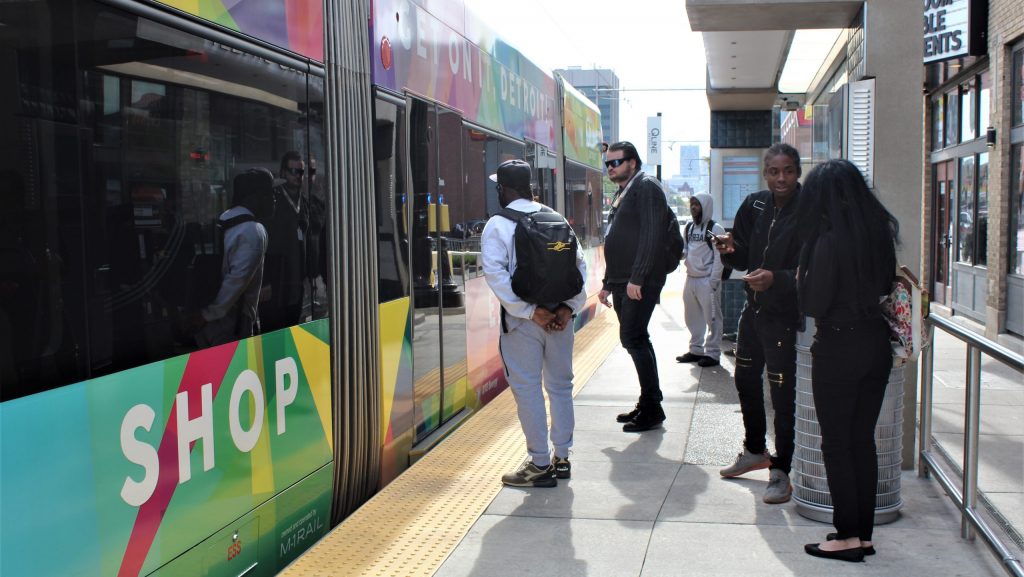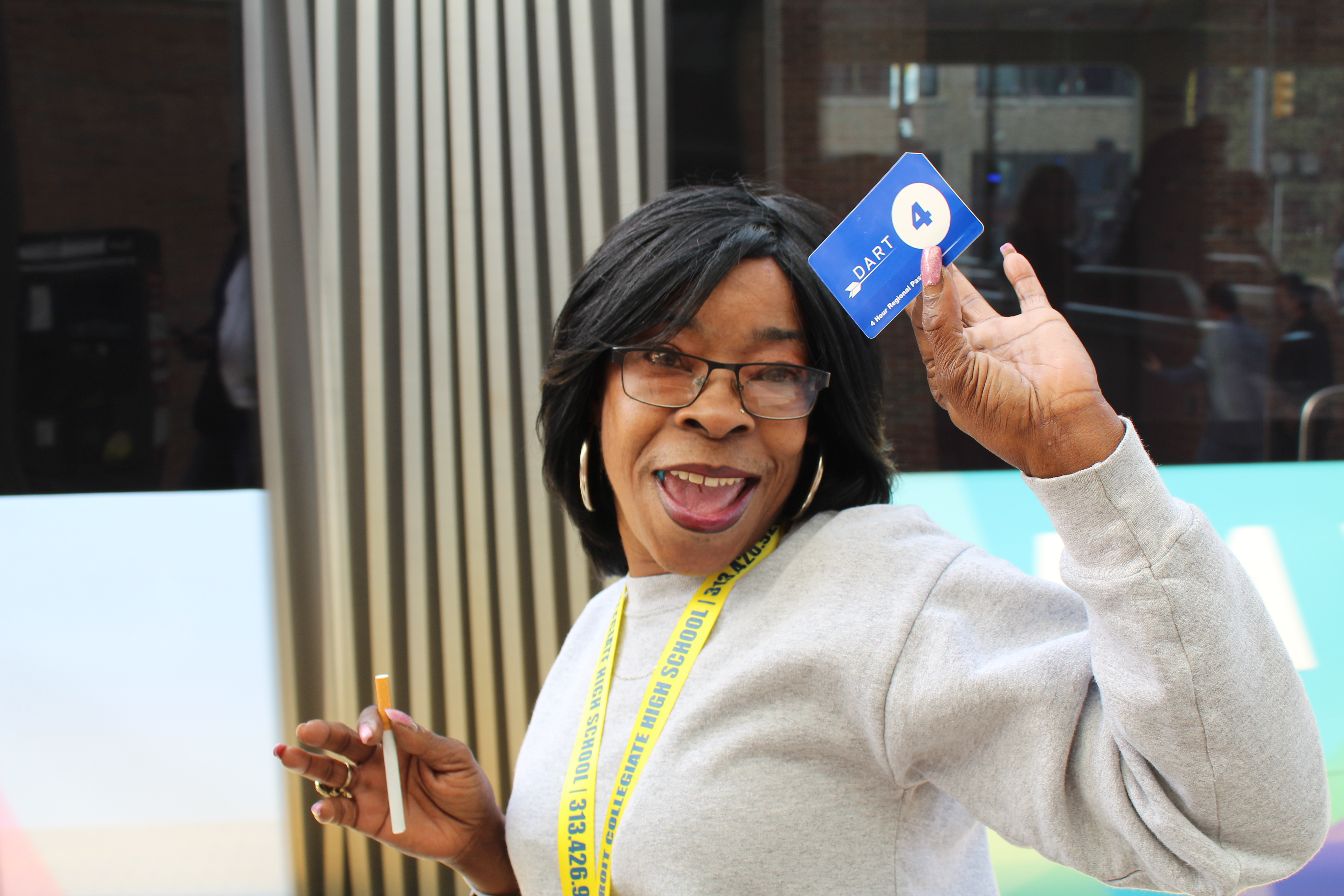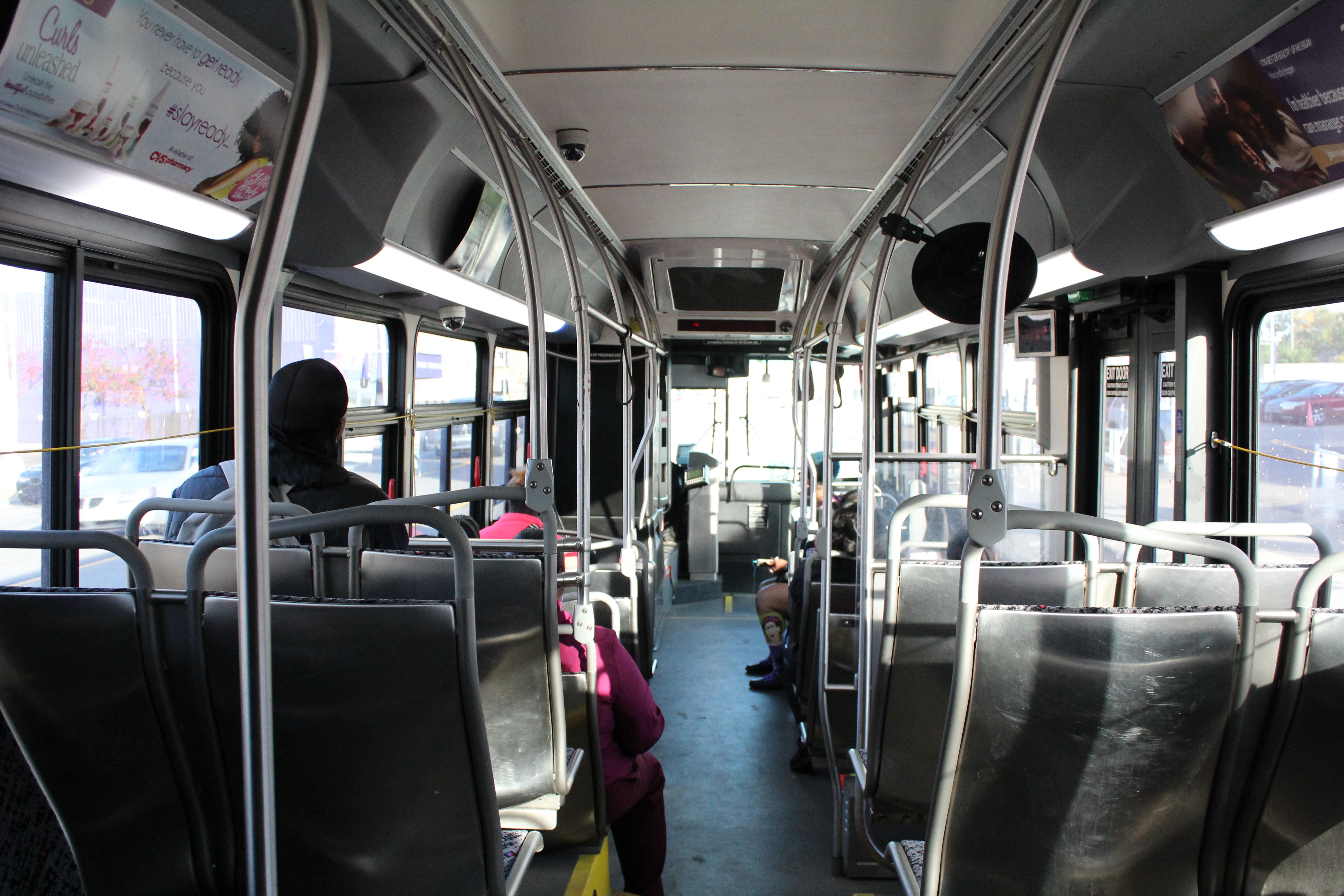QLine Tickets Can Now Be Used to Ride the Bus, A Win For Transit Advocates
Interoperability between different transportation systems is a historic cooperation between agencies, but stigma around bus riding remains.

Detroit currently has no railway line that connects neighborhoods in the city to the surrounding suburbs.
Louise Coleman is standing on Woodward Avenue waiting for the bus when I ask her if she knows she can use her bus fare to ride the QLine.
“This thing?” she asks, pointing to the colorful street car that runs along Woodward Avenue from Jefferson Avenue to Grand Boulevard, and is headed towards us.
“Yeah,” I reply.
Coleman springs into action.
“Come on, let’s go!” she says, clutching a Dart pass in one hand and a cigarette in the other. She runs down Woodward, across Canfield Street, reaching the station just in time to board the QLine.
Click on the audio player at the top of the page to hear this story.

The QLine has become the newest Detroit transit provider to offer and accept Dart passes. That means that Detroit Department of Transportation (DDOT) and Suburban Mobility Authority for Regional Transportation (SMART) bus riders can now use Dart passes on the QLine and vice versa.
Dart is a regional transportation payment system that launched in May. At that point in time, Dart passes could be used on DDOT and SMART buses, but not the QLine. That changed last week.
“If you’ve historically been a bus rider, it’s a great time to try out the QLine,” says Dan Lijana, communications officer for M1 Rail, the organization that runs the QLine. “When you’re standing on Woodward, you’re basically in a situation now where you can take the transit that comes to you first.”
In order for the QLine to be able to accept Dart passes, the street car system’s single fare tickets rose 50 cents from $1.50 to $2. As a result, QLine single fares are now good for four hours instead of three.
The Dart payment system also offers 4-hour, 24-hour, 7-day and 31-day passes that can be used for unlimited travel on the QLine, DDOT and SMART buses until the passes expire. Some of these passes can be purchased on board the systems. All Dart passes can be purchased using the Dart app.
“The Dart app helps solidify our efforts to improve and unify transit for the region,” says John C. Hertel, General Manager of SMART. “We are happy to continue our collaboration on Dart with DDOT and our newest partner, QLine, which helps make it easier for people to pay and connect to places in both the city and in the suburbs.”

Jennifer Frye, DDOT Marketing Manager, says they’re ecstatic about the pass being extended to Detroit’s street car.
“Now, if you’re using or purchasing one of our Dart passes you don’t have to feel pigeonholed,” says Frye. “We know that our customer is riding and choosing a variety of options for mobility.”
Lijana, again with M1 Rail, says the Dart pass’s creation and expansion marks a turning of the corner for public transportation in the region.
“Transit in metro Detroit, it’s not where most major cities and major regions are. And part of that is because all the systems have had separate ticketing,” says Lijana. “We haven’t cooperated in ways, historically, that are now happening.”
While the three public transportation providers that service Detroit are indeed cooperating in historic ways, more work will need to be done to combat the stigma of riding the bus.
Over at the QLine stop on Canfield, Tariq Cox says it doesn’t really matter that he can use his QLine ticket to ride the bus because “I really don’t ride the bus.”
A DDOT bus that’s going downtown – the direction Cox is headed – approaches. There’s a stop just across Canfield Street that Cox could catch. But he doesn’t get up. Cox says he’d rather just sit and wait for the QLine.
